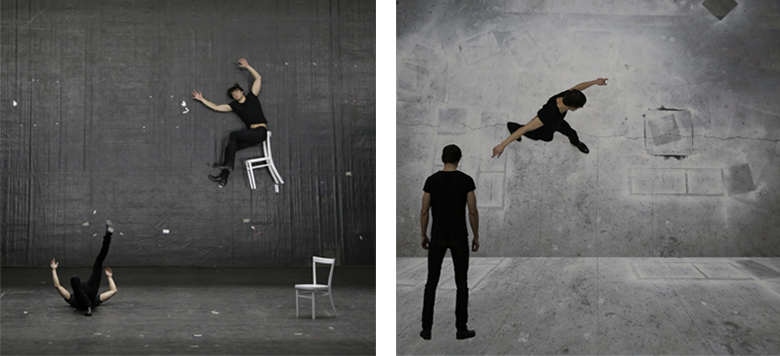
Tilman Hecker was born in Karlsburg, Germany in 1980. He studied architecture and scénographie in Berlin and Paris. During his studies he started working with Robert Wilson and Achim Freyer as assistant director and collaborator. Hecker made his directorial debut with the Mozart opera Mandina amabile at Berlin’s Radial System V in July 2009. Other directing credits include Jay Schwartz’s Narcissus and Echo for the Salzburg State Theatre and the Musicadhoy Festival Madrid (2011), La Finta Giardiniera by Mozart for the Wuppertal Opera (2012), Thomas Arne’s The Masque of Alfred for the Pocket Opera Company Nuremberg (2012), John Cage’s Songbooks for the Werkstatt for Staatsoper Berlin (2012), Domenico Cimarosa’sThe Secret Marriage at the Nordhausen Opera (2013). In 2014 he will create an opera on Jean Genet’s Querelle together with the composer Birke Bertelsmeier for the Tischlerei / Deutsche Oper Berlin.

Midnight is a performance based on Mozart‘s last piano concerto KV 595, two concert arias KV 538, KV 505, a song KV 596, a piano sonata KV 457, a piano fantasy KV 475, as well the ten piano concerto fragments. Mozart‘s music will not be heard but only experienced through four „stage elements“: 1.) movement performer A, 2.) movement performer B, 3.) video, 4.) lighting. We are using Mozart‘s compositional structure as the framework for the performance. Mozart‘s musical elements can be separated into 1.) piano, 2.) voice, 3.) winds and 4.) strings. Mozart‘s use of these musical elements provides the structure and intensity for the use of the four „stage elements“ mentioned above.
Each compositional element is associated with a paired stage element. This association stipulates the duration and intensity of its performance: Lights flash (or come up slowly) only when strings play. Video projects only when the winds play. Performer A only moves when the piano plays. Performer B, only when the voice is singing. None of which will be heard by the audience. Instead, a live sound installation will interact with the movements of the performers.
A full run of the performance seen from above will be projected in reverse on a cycle at the upstage part of the stage. In a blue screen system all stage actions can be transferred into any possible setting. A third performer C performs independently from the musical time structure. A complex cosmos of sound, video, light, and movement is created. Each stage element appears individually, but only layered through Mozart’s exceptional use of the orchestral elements. The structure of Mozart’s music thus creates a structure model of the world in it‘s external energetic (societal vs. natural) conditions.
